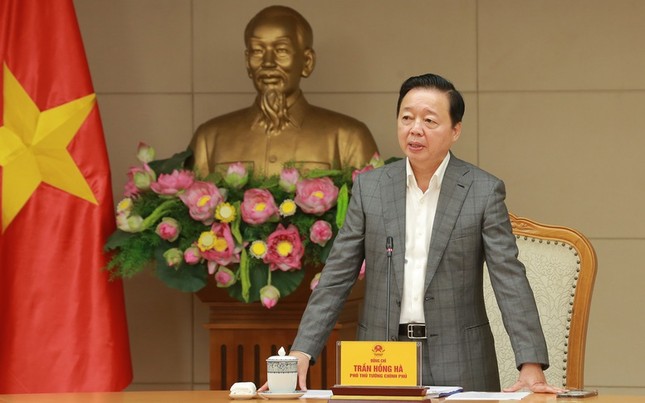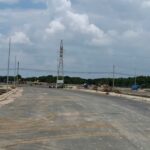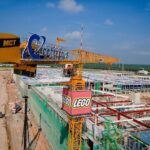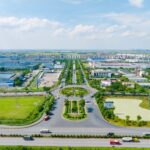On March 28th, Deputy Prime Minister Tran Hong Ha chaired a meeting with ministries, sectors, and experts, connecting online with localities to discuss adjustments to the National Land Use Planning for the 2021-2030 period, with a vision towards 2050.
In his remarks, the Deputy Prime Minister noted that in the context of streamlining organizational structures and merging administrative boundaries of localities, aiming for double-digit growth, there is a need to change the approach, basis, and development mindset. He emphasized that the National Land Use Planning should be dynamic, open, and forward-looking, clearly identifying areas that need to be controlled and managed, while at the same time, providing room for local creativity and autonomy.
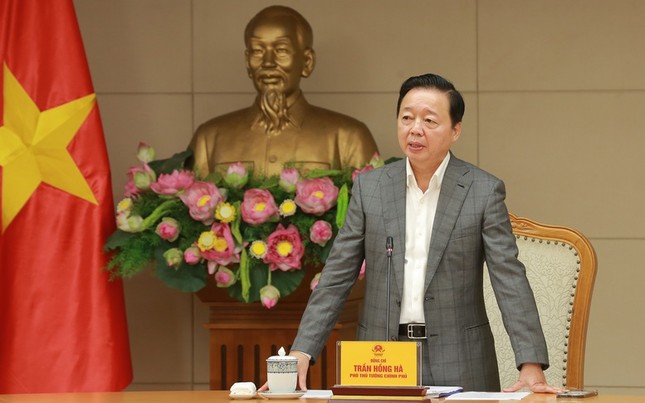
Deputy Prime Minister Tran Hong Ha speaks at the meeting. Photo: VGP
Reporting at the meeting, Deputy Minister of Agriculture and Rural Development Le Minh Ngan stated that the goal of adjusting the National Land Use Planning is to allocate land resources reasonably, economically, and efficiently. Priorities include developing a synchronous infrastructure system, promoting industrialization and modernization, urban development, and maintaining a reasonable rice-growing area to ensure national food security.
Additionally, the planning aims to meet the land needs for achieving socio-economic development targets for the 2026-2030 period, with a growth rate of 8% or higher in 2025 and continuous double-digit growth in the subsequent years.
According to the Ministry of Agriculture and Rural Development, efforts will continue to be made in land reclamation, land improvement, and land reclamation from the sea, as well as bringing unused land into use. Attention will also be given to preventing land degradation and restoring degraded land in conjunction with environmental protection and sustainable development.
By 2030, the projected area of agricultural land is 26,782.12 thousand hectares, a decrease of 949.92 thousand hectares compared to the approved planning. Of this, 3,341.80 thousand hectares will be dedicated to rice cultivation, producing 39.47 million tons of paddy annually, while the country’s food security requirement by 2030 is projected to be 33.73 million tons.
The area of forest land is expected to be 15,502.07 thousand hectares, a reduction of 347.70 thousand hectares, ensuring a forest coverage rate of 46.78%, which is 4.78% higher than the target set by the 13th Party Congress (42%). The non-agricultural land group is projected to reach 5,833.25 thousand hectares by 2030, an increase of 936.77 thousand hectares.
Concluding the meeting, Deputy Prime Minister Tran Hong Ha instructed the Ministry of Agriculture and Rural Development to continue coordinating with relevant ministries, sectors, and localities to finalize the adjustments to land-use indicators. This includes calculating the transitional period for using the land use planning and plans when abolishing the district-level administration, as well as defining the responsibilities, authority, and tasks of provincial and communal authorities.
“This planning demonstrates a strong spirit of decentralization to localities, integrating with other plannings, and taking construction planning as the center,” the Deputy Prime Minister emphasized.
Regarding agricultural land, the Deputy Prime Minister suggested innovating the management approach for agricultural and rice land, taking into account food security and adapting to climate change when considering adjustments or converting rice land to more economically viable aquaculture, vegetable, and fruit cultivation.
The Deputy Prime Minister also requested a review of the criteria for classifying forest land with industrial tree plantations and land with forest cover for environmental protection, to ensure clear and separate management. He further emphasized the allocation of industrial land indicators in conjunction with principles for arranging private land use, aiming for more efficient utilization.
Additionally, when adjusting the National Land Use Planning, the Deputy Prime Minister highlighted the need for a flexible mechanism to adjust land-use indicators for urgent projects in the Mekong Delta region that cannot be foreseen. He also mentioned a mechanism for including newly reclaimed land from the sea in the National Land Use Planning and delegating authority to localities to proactively mobilize resources for rehabilitating polluted and degraded land.
Why Dong Nai Proposed to Reduce Over 27,000 Ha of Agricultural Land
With a focus on economic and social development, Dong Nai province has proposed a reduction of 27,200 hectares of agricultural land to make way for a much-needed increase in industrial, transportation, residential, and technical infrastructure areas. This bold move showcases the province’s commitment to fostering a thriving and diverse economy, one that strikes a delicate balance between traditional agricultural strengths and the demands of a modern, industrializing nation.
The Race for Industrial Land: Vietnam’s $30 Billion FDI Attraction by 2025
The Ministry of Finance’s Statistics Bureau has revealed that foreign investment (FDI) into Vietnam reached an impressive $6.9 billion in the first two months of 2025, a 35.5% increase compared to the same period last year. This surge in FDI not only fosters sustainable economic growth but also positions Vietnam as a powerhouse for high-tech manufacturing in the region.
Aluminum Electrolysis Plant Project in Dak Nong Receives Massive $690 Million Financial Arrangement
Recently, the Bank announced a VND12.5 trillion financing arrangement for the Dak Nong Aluminium Smelter project of Tran Hong Quan Metallurgy JSC.

